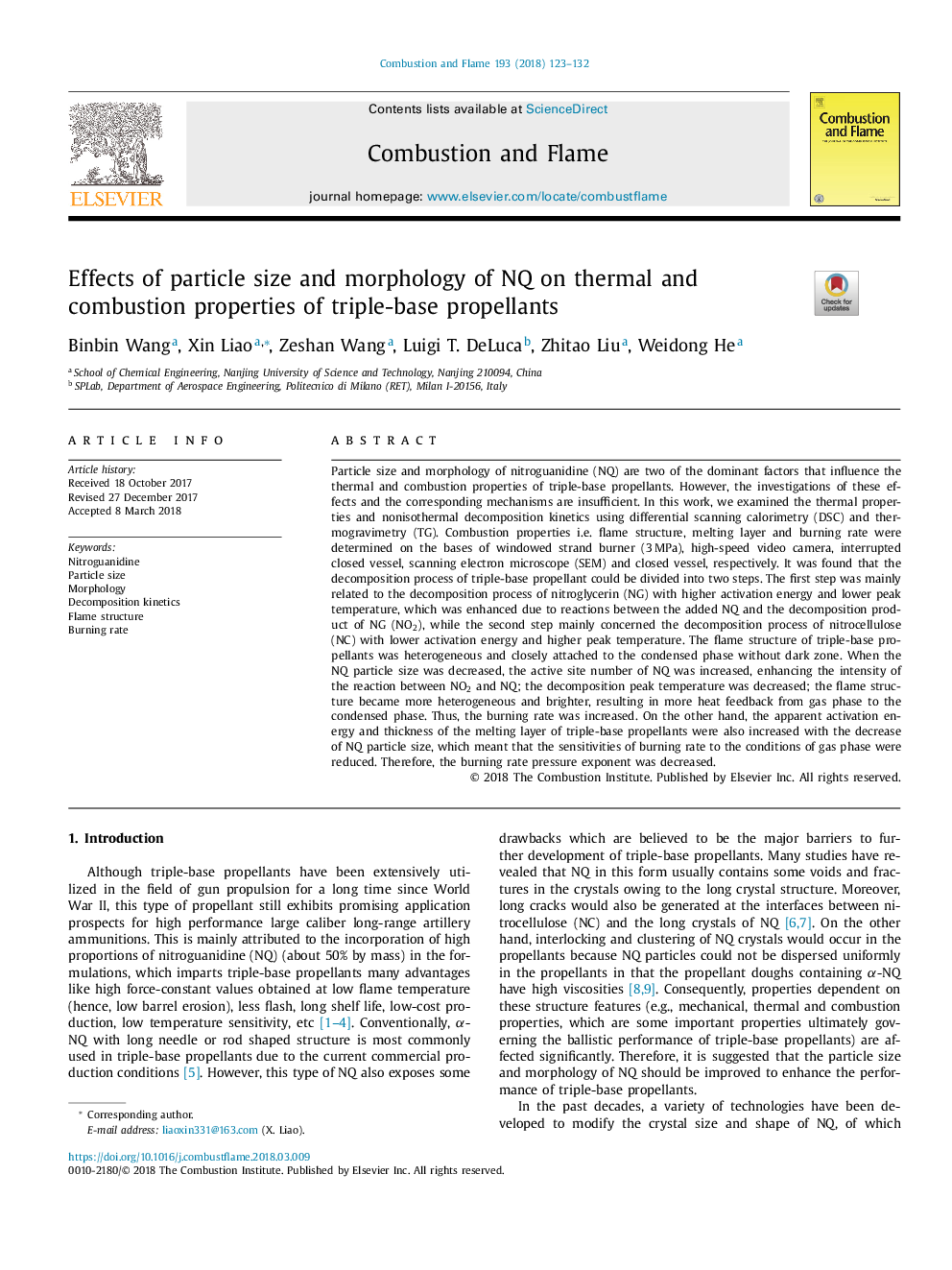| کد مقاله | کد نشریه | سال انتشار | مقاله انگلیسی | نسخه تمام متن |
|---|---|---|---|---|
| 6593552 | 1423544 | 2018 | 10 صفحه PDF | دانلود رایگان |
عنوان انگلیسی مقاله ISI
Effects of particle size and morphology of NQ on thermal and combustion properties of triple-base propellants
دانلود مقاله + سفارش ترجمه
دانلود مقاله ISI انگلیسی
رایگان برای ایرانیان
کلمات کلیدی
موضوعات مرتبط
مهندسی و علوم پایه
مهندسی شیمی
مهندسی شیمی (عمومی)
پیش نمایش صفحه اول مقاله

چکیده انگلیسی
Particle size and morphology of nitroguanidine (NQ) are two of the dominant factors that influence the thermal and combustion properties of triple-base propellants. However, the investigations of these effects and the corresponding mechanisms are insufficient. In this work, we examined the thermal properties and nonisothermal decomposition kinetics using differential scanning calorimetry (DSC) and thermogravimetry (TG). Combustion properties i.e. flame structure, melting layer and burning rate were determined on the bases of windowed strand burner (3â¯MPa), high-speed video camera, interrupted closed vessel, scanning electron microscope (SEM) and closed vessel, respectively. It was found that the decomposition process of triple-base propellant could be divided into two steps. The first step was mainly related to the decomposition process of nitroglycerin (NG) with higher activation energy and lower peak temperature, which was enhanced due to reactions between the added NQ and the decomposition product of NG (NO2), while the second step mainly concerned the decomposition process of nitrocellulose (NC) with lower activation energy and higher peak temperature. The flame structure of triple-base propellants was heterogeneous and closely attached to the condensed phase without dark zone. When the NQ particle size was decreased, the active site number of NQ was increased, enhancing the intensity of the reaction between NO2 and NQ; the decomposition peak temperature was decreased; the flame structure became more heterogeneous and brighter, resulting in more heat feedback from gas phase to the condensed phase. Thus, the burning rate was increased. On the other hand, the apparent activation energy and thickness of the melting layer of triple-base propellants were also increased with the decrease of NQ particle size, which meant that the sensitivities of burning rate to the conditions of gas phase were reduced. Therefore, the burning rate pressure exponent was decreased.
ناشر
Database: Elsevier - ScienceDirect (ساینس دایرکت)
Journal: Combustion and Flame - Volume 193, July 2018, Pages 123-132
Journal: Combustion and Flame - Volume 193, July 2018, Pages 123-132
نویسندگان
Binbin Wang, Xin Liao, Zeshan Wang, Luigi T. DeLuca, Zhitao Liu, Weidong He,